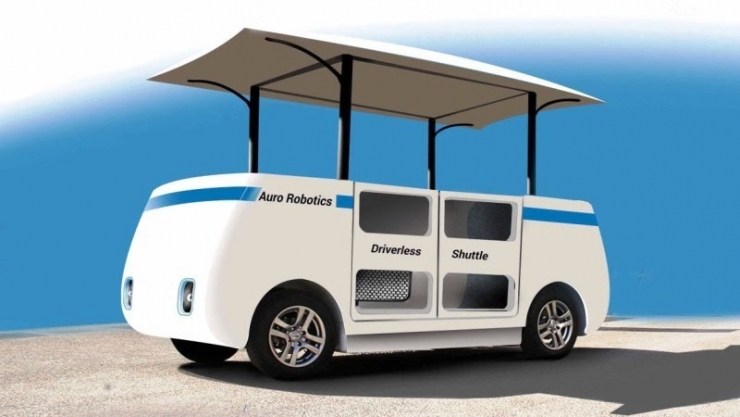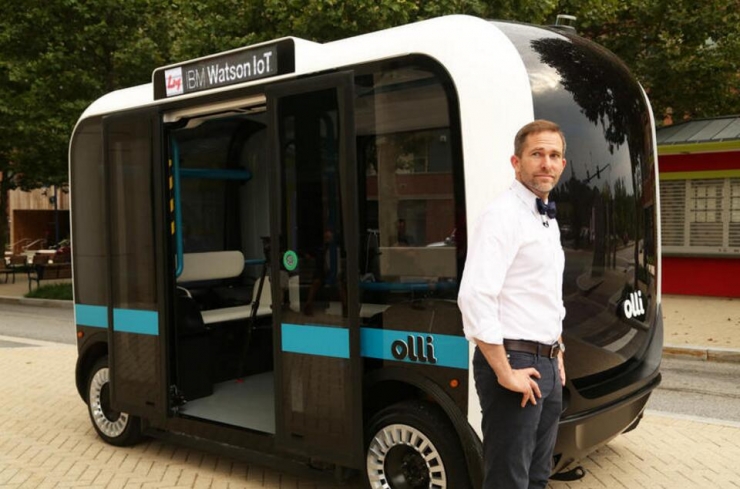Which is the most powerful automatic driving bus?

Last week, Mercedes-Benz released their Future Bus. This bus is equipped with Mercedes-Benz's newly developed CityPilot autopilot system, which enables highly automated driving. Mercedes-Benz compares this future bus to the "milestone of future city-autonomous driving buses." It has now completed an open road test. Since its release, Mercedes-Benz's cool bus has received applause and knees from many people. But as everyone knows, other small companies are also working on the development of autonomous driving buses.
It is true that the tide of self-driving is very strong. Start-up companies studying autopilot are working hard and are hanging on the road to financing. Now, auto-pilot startups have emerged, and companies such as Zoox, Comma.ai, nuTonomy, Nauto, and Drive.ai have also received favor from investors.
However, it is very difficult to develop a fully self-driving car. RAND said: Every self-driving car must pass 10 billion or 100 million miles of testing to ensure safety. In the face of difficulties, many companies are facing difficulties while others are looking for ways to focus on more detailed areas. One of these is the automatic driving of buses.
Foreign media CB Insights summarized five start-up companies specializing in self-driving buses. Below, Xiao Bian gave everyone a one-by-one introduction.
The first thing to point out is that these companies are testing a variety of different concepts, but they have all developed at least one autonomous driving bus. Many of them are traveling in specific locations, such as corporate campuses or campuses. In theory, these locations can reduce the difficulty of driving a self-driving bus and reduce the chance of accidents.
Of these five companies, two are from France. They are Navya and EsayMile. Navya has developed a bus that can carry 15 people. The bus is called Arma and has now been tested in many parts of France. Navya has now received favor from a number of investment institutions, including Robolution Capital, a robot venture company, and FRCI, a joint investment team. EsayMile, a joint venture between French company Ligier and Indian company Robosoft, has developed a bus called EZ10.

(Arma of Navya)

(EsayMile's EZ10)
In addition, there are Auro Robotics from California and Varden Labs from Waterloo. These two companies are dedicated to the development of self-driving buses on campus, military bases, retired elderly communities, and resorts. They have received investment support from Y Combinator. At the same time, Varden Labs has also been listed as one of Y Combinator's winter 2016 investment plans.

(Auro Robotics)
The last company is called Local Motors. It is headquartered in Arizona, USA, and built an Olli, an autonomously driven pure electric bus. Its body is made by Local Motors' unique 3D printing technology. It uses the most popular laser rangefinders and ultrasonic sensors to achieve automatic driving condition monitoring. However, due to the fact that the technology is not mature, the current testing stage still consists of Humans monitor to prevent sudden brain cramps in automated systems. Olli can provide short-range urban mobility services for 12 people. The pure electric drive structure determines its zero emission, and the short-to-fat narrow-skin type determines that it can complete high-efficiency delivery tasks in a crowded urban area. It is worth mentioning that this bus is the first vertical application of IBM's Watson cognitive learning platform.

(Olli of Local Motors)
Perhaps, when we focus on Mercedes-Benz's cool bus, we should give some applause and knees to these small companies.
